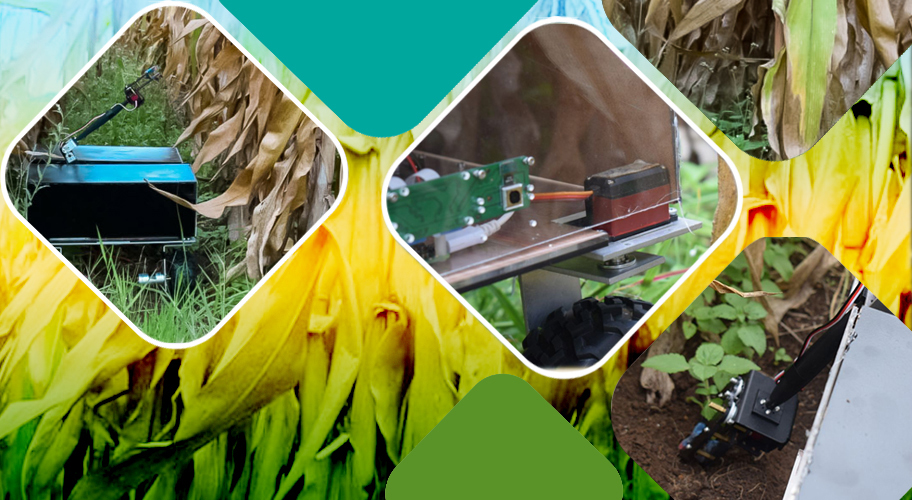This AI-powered weed-removing robot could help farmers in Africa grow more crops
Food security in Africa is critical. Declining agricultural stocks, coupled with the ongoing effects of climate change, pose a threat to the sustainable production of food.
As an industry, agriculture forms the backbone of Africa’s economy. There are approximately 33 million farms on the continent, 80 percent of which are small farms, under five acres, which are run by families – that’s roughly seven out of 10 homes that rely on agriculture to earn a living. One of the greatest threats that these farmers face, are low yields due to weed infestations.

Weeds can reduce crop yields by up to 60 percent, which can have severe economic and humanitarian knock-on effects. Currently, the use of herbicides is one of the most common ways to fight against the effects of weeds, but this is far from an ideal solution.
Herbicides are expensive, and need to be bought regularly to keep weeds at bay, resulting in a costly expenditure that may not be sustainable. In addition, they can contaminate the crops themselves, posing a health risk. Even worse, farmers themselves are at risk of contracting cancer from exposure to certain herbicides. Lacking the proper safety equipment such as respirators and protective clothing, herbicide use can pose a huge health risk.
To help tackle this problem, two students from the Jomo Kenyatta University of Agriculture and Technology in Kenya have designed a robot powered by artificial intelligence (AI), to automatically remove weeds.
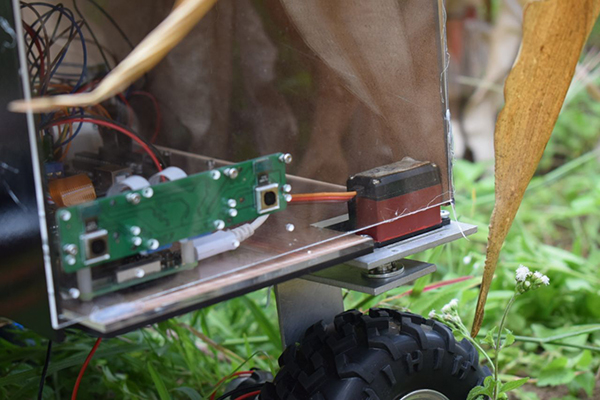
Growing up in Nairobi, university classmates Kenneth Gicira and Michael Mwaisakenyi saw the experiences of problems caused by de-weeding first hand, with Mwaisakenyi’s grandfather still tending to his seven acre farm. Now, the pair have reached the global final of the Microsoft Imagine Cup – an initiative that supports the brightest young minds from around the world to help solve problems with technology.
With ambitions to develop their idea into a finalized product to help farmers across the country, their goal is both noble, and exciting. Here’s a closer look at their project.
The robot that Mwaisakenyi and Gicira have designed is a miniature vehicle with four-wheel drive, which allows it to traverse farmland terrain without sacrificing maneuverability. It also has a built-in robotic arm for gripping, which is used in conjunction with a plough-like weeding tool.
Rather than just designing a remote-controlled robot however, the pair have bolstered their solution with AI, giving the robot the ability to remove weeds autonomously. The system uses Microsoft’s Custom Vision AI, which has been trained with images of both crops and weeds, so that it can automatically differentiate between the two groups. An on-board microcomputer, capable of carrying out object detection offline, works in conjunction with a stereo camera system, which acts as the robot’s eyes.
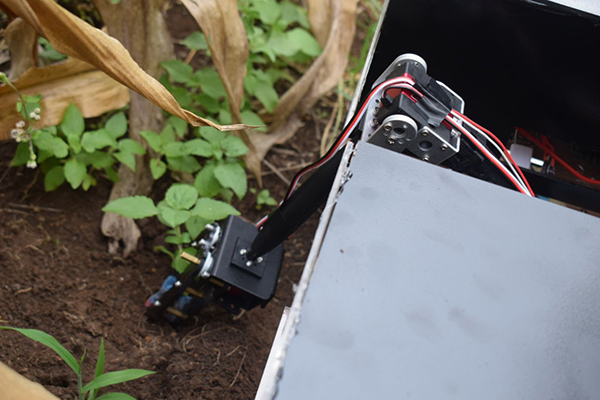
The end result is a device that not only saves farmers from the physical strain and injuries associated with manual labor, but also allows weed removal at any time of day and in different conditions, offering further convenience. The AI system itself also requires no technical knowledge to operate, due to its machine learning-gathered intelligence.
When fully developed, the AI-powered robot solution will allow farmers to remove weeds on their famers without the use of expensive and dangerous herbicides, greatly reducing the health risks associated with working with, or ingesting, herbicides.
Source:
หุ่นยนต์กําจัดวัชพืชที่ขับเคลื่อนด้วย AI นี้สามารถช่วยให้เกษตรกรในแอฟริกาปลูกพืชได้มากขึ้น
ความมั่นคงทางอาหารในแอฟริกาเป็นสิ่งสําคัญ สต็อกสินค้าเกษตรที่ลดลงประกอบกับผลกระทบอย่างต่อเนื่องของการเปลี่ยนแปลงสภาพภูมิอากาศเป็นภัยคุกคามต่อการผลิตอาหารที่ยั่งยืน
ในฐานะอุตสาหกรรมการเกษตรเป็นกระดูกสันหลังของเศรษฐกิจของแอฟริกา มีฟาร์มประมาณ 33 ล้านแห่งในทวีปซึ่ง 80% เป็นฟาร์มขนาดเล็กมีพืเนที่ประมาณ 5 เอเคอร์ซึ่งดําเนินการโดยครอบครัว นั่นคือประมาณ 7 ใน 10 บ้านที่ต้องพึ่งพาการเกษตรเพื่อหาเลี้ยงชีพ หนึ่งในภัยคุกคามที่ยิ่งใหญ่ที่สุดที่เกษตรกรเหล่านี้เผชิญคือผลผลิตต่ําเนื่องจากการระบาดของวัชพืช
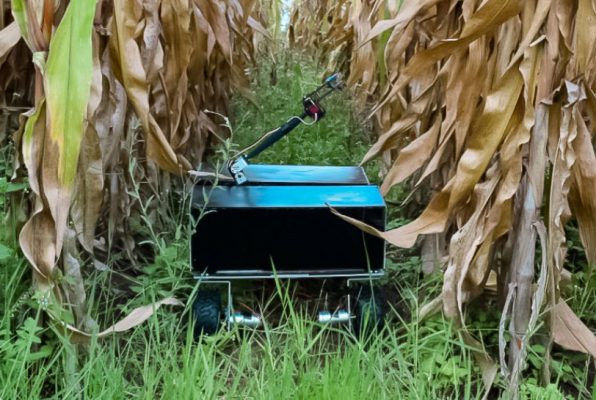
วัชพืชสามารถ ทำลายผลผลิตพืชผลได้มากถึง 60% ซึ่งอาจส่งผลกระทบอย่างรุนแรงทางเศรษฐกิจและมนุษยธรรม ปัจจุบันการใช้สารกําจัดวัชพืชเป็นหนึ่งในวิธีที่พบมากที่สุดในการต่อสู้กับผลกระทบของวัชพืช แต่นี่ยังห่างไกลจากทางออกที่ดี
สารกําจัดวัชพืชมีราคาแพงและจําเป็นต้องซื้อเป็นประจําเพื่อไม่ให้วัชพืชลุกลามออกมาใหม่ ส่งผลให้ค่าใช้จ่ายที่มีราคาแพงซึ่งอาจไม่ยั่งยืน นอกจากนี้พวกเขายังมีความเสี่ยงต่อการปนเปื้อน ก่อให้เกิดความเสี่ยงต่อสุขภาพ ที่แย่ไปกว่านั้นคือเกษตรกรเองมีความเสี่ยงที่จะติดเชื้อมะเร็งจากการสัมผัสกับสารกําจัดวัชพืชบางชนิด การขาดอุปกรณ์ความปลอดภัยที่เหมาะสมเช่นเครื่องช่วยหายใจและชุดป้องกันการใช้สารกําจัดวัชพืชอาจก่อให้เกิดความเสี่ยงต่อสุขภาพอย่างมาก
เพื่อช่วยแก้ไขปัญหานี้นักเรียนสองคนจาก Jomo Kenyatta University of Agriculture and Technology ในเคนยาได้ออกแบบหุ่นยนต์ที่ขับเคลื่อนด้วยปัญญาประดิษฐ์ (AI) เพื่อกําจัดวัชพืชโดยอัตโนมัติ

เพื่อนร่วมชั้นของมหาวิทยาลัย Kenneth Gicira และ Michael Mwaisakenyi เติบโตขึ้นมาในไนโรบีได้เห็นประสบการณ์ของปัญหาที่เกิดจากการกําจัดวัชพืชโดยตรงโดยปู่ของ Mwaisakenyi ยังคงดูแลฟาร์มเจ็ดเอเคอร์ของเขา ตอนนี้ทั้งคู่ได้มาถึงรอบชิงชนะเลิศระดับโลกของ Microsoft Imagine Cup ซึ่งเป็นความคิดริเริ่มที่สนับสนุนจิตใจที่ฉลาดที่สุดจากทั่วโลกเพื่อช่วยแก้ปัญหาด้วยเทคโนโลยี
ด้วยความทะเยอทะยานที่จะพัฒนาความคิดของพวกเขาให้เป็นผลิตภัณฑ์ขั้นสุดท้ายเพื่อช่วยเหลือเกษตรกรทั่วประเทศเป้าหมายของพวกเขามีทั้งสูงส่งและน่าตื่นเต้น นี่คือรายละเอียดเพิ่มเติมของโครงการของพวกเขา
หุ่นยนต์ที่ Mwaisakenyi และ Gicira ได้ออกแบบเป็นยานพาหนะขนาดเล็กที่มีระบบขับเคลื่อนสี่ล้อซึ่งช่วยให้สามารถสํารวจภูมิประเทศของพื้นที่เพาะปลูกได้โดยไม่ต้องเสียสละความคล่องแคล่ว นอกจากนี้ยังมีแขนหุ่นยนต์ในตัวสําหรับจับซึ่งใช้ร่วมกับเครื่องมือกําจัดวัชพืชแบบไถ
แทนที่จะออกแบบหุ่นยนต์ควบคุมระยะไกล แต่ทั้งคู่ได้เสริมโซลูชันด้วย AI ทําให้หุ่นยนต์สามารถกําจัดวัชพืชได้อย่างอิสระ ระบบใช้ Custom Vision AI ของ Microsoft ซึ่งได้รับการฝึกฝนด้วยภาพของทั้งพืชและวัชพืชเพื่อให้สามารถแยกความแตกต่างระหว่างสองกลุ่มได้โดยอัตโนมัติ ไมโครคอมพิวเตอร์ออนบอร์ดที่สามารถตรวจจับวัตถุแบบออฟไลน์ทํางานร่วมกับระบบกล้องสเตอริโอซึ่งทําหน้าที่เป็นดวงตาของหุ่นยนต์
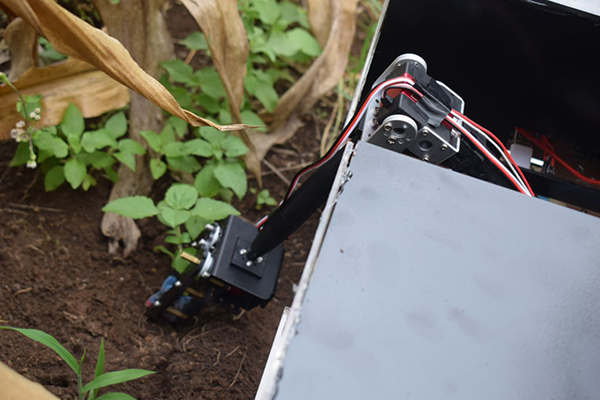
ผลลัพธ์ที่ได้คืออุปกรณ์ที่ไม่เพียง แต่ช่วยเกษตรกรจากความเครียดทางกายภาพและการบาดเจ็บที่เกี่ยวข้องกับการใช้แรงงานคน แต่ยังช่วยให้สามารถกําจัดวัชพืชได้ตลอดเวลาและในสภาพที่แตกต่างกันให้ความสะดวกสบายเพิ่มเติม ระบบ AI เองก็ไม่ต้องใช้ความรู้ด้านเทคนิคในการทํางานเนื่องจากความฉลาดที่รวบรวมการเรียนรู้ของเครื่อง
เมื่อพัฒนาอย่างเต็มที่โซลูชันหุ่นยนต์ที่ขับเคลื่อนด้วย AI จะช่วยให้เกษตรกรสามารถกําจัดวัชพืชบนตัวปลอมโดยไม่ต้องใช้สารกําจัดวัชพืชที่มีราคาแพงและเป็นอันตรายซึ่งช่วยลดความเสี่ยงต่อสุขภาพที่เกี่ยวข้องกับการทํางานหรือกินสารกําจัดวัชพืชได้อย่างมาก

